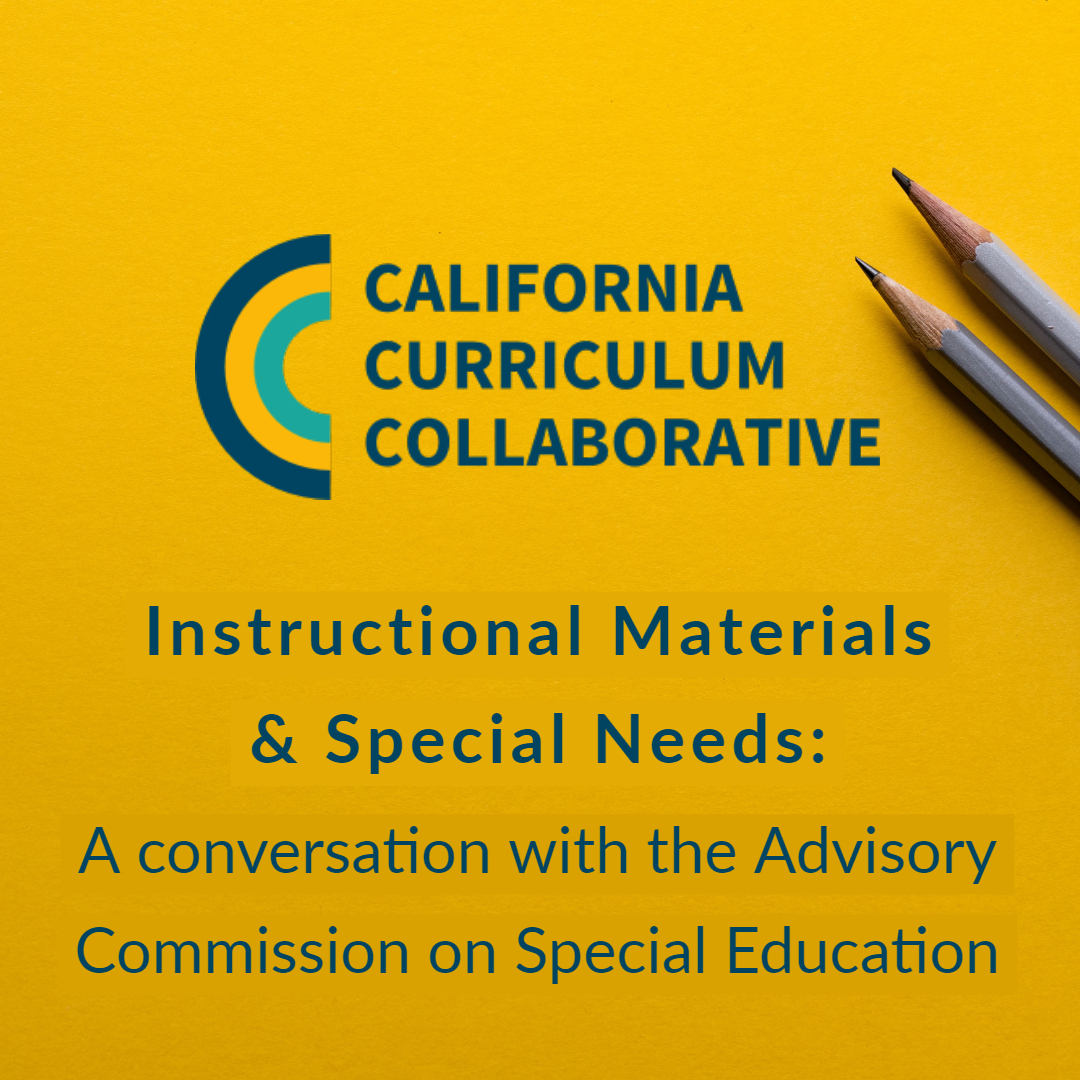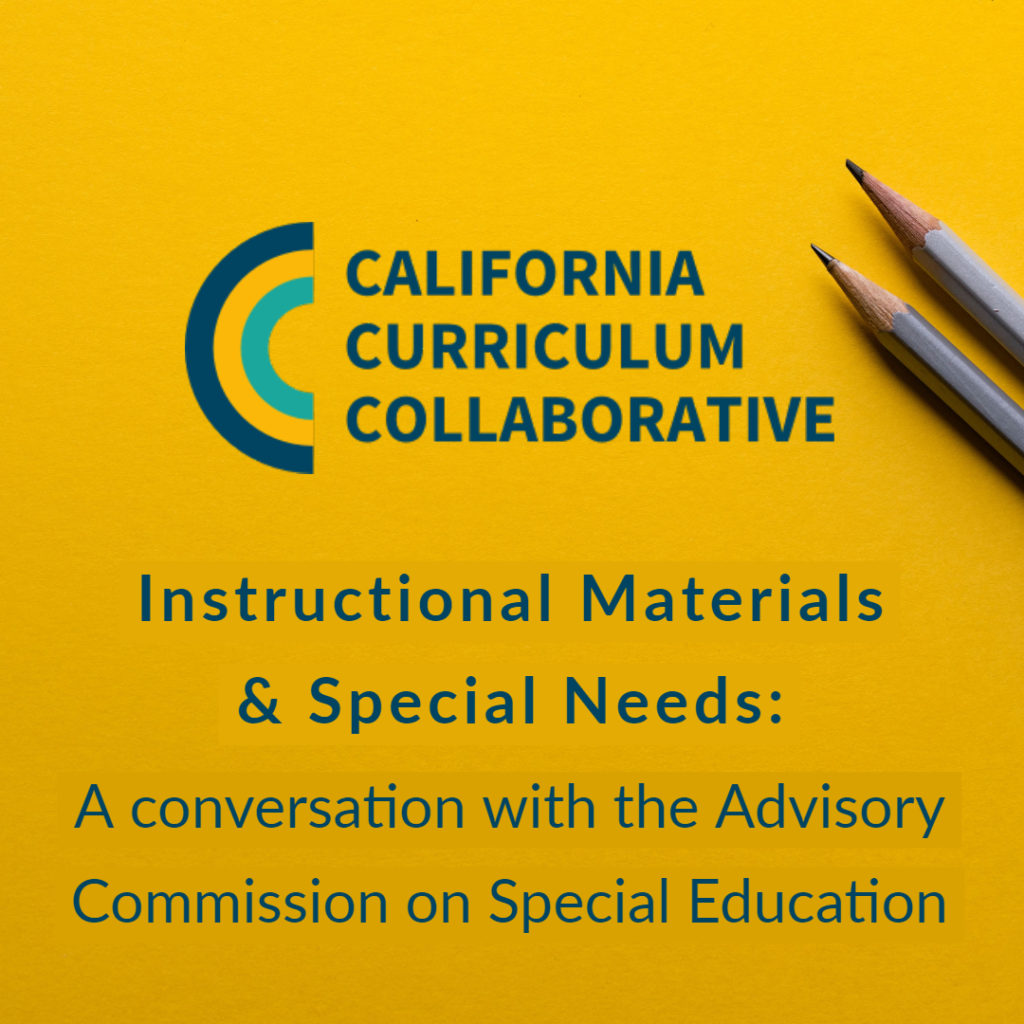Blog
Materials Matter for ALL Students
January 9, 2019


Author: Allison Carter
Did you know: 13 percent of all students in public schools are receiving special education services and classes? That’s 6.7 million kids across the country that face a variety of challenges including learning disabilities, speech, visual or language impairments, as well as a diverse set of physical and mental health issues. These students, just like all students, are excited to learn, have dreams for the future, and are looking to us to provide them with the tools needed to make those dreams a reality.
Research shows us that great teachers supported with great instructional materials can make a difference in the lives of students at all levels of learning. As we consider what it means for instructional materials to be high-quality, it’s important to consider the implications for special education students because we understand that it’s not acceptable for just some kids to succeed.
In November, we had the opportunity to share some of CalCurriculum’s resources and experiences in supporting districts’ adoption and implementation work with the California Department of Education’s Advisory Commission on Special Education.
We jumped at the opportunity to get guidance and feedback from these experts on how we might better support the needs of students with disabilities in our instructional materials guidance. When looking at instructional materials in service of students with disabilities, the Commission highlighted 5 important questions for consideration:
5 Questions for Special Education Educators to Ask About Instructional Materials
- Accessibility:Are teachers and students able to access instructional materials in multiple formats and do materials offer a variety of supports such as specialized audio and visual formats? Having materials that are high-quality and aligned will mean little if students cannot access them. Students deserve both quality content and the tools necessary to fully explore and benefit from that content.
- Scaffolding:Do materials offer evidence of scaffolding that is embedded into the design of the lessons and units? Scaffolding and differentiation that is built into the curriculum offers teachers a foundation for reaching each individual child. Materials will never be all-inclusive of every specific need but a variety of opportunities for scaffolding lays the groundwork for the differentiation that is vital for students to thrive.
- Supported by Research:Do the materials and additional supports include research-based programs and recommendations? While evaluating materials through a special education lens, it’s important to note whether those materials make choices and recommendations based on research. Just like materials, additional supports are not created equal and it is important for deep learning and established practices to guide the design of those resources to ensure students have access to what they need for success.
- Usability and Design: Are the materials usable and well-designed? Given the importance of differentiation for special education students, high-quality materials are invaluable supports for teachers. Rather than spending hours online looking for ways to adapt and improve programs, teachers will instead have the tools and capacity to use their creativity in designing lessons that will inspire students at all levels to learn.
- Aligned to the California Dashboard: How well do the materials provide explicit supports for the most vulnerable students populations identified in the CA Dashboard?
It is especially important to consider students who are dually identified such as African-American students with disabilities or Latino students with disabilities to ensure students are supported comprehensively with all needs addressed. Research has shown that children of color with disabilities often experience a segregated education system with access to fewer resources.
All students matter. All students must count when districts and schools are considering the supports, services, and comprehensive approaches integral to meeting kids’ needs. We know there is no silver bullet but we also know that when teachers have tools that provide opportunities and supports for students at every level to learn, there is no height kids cannot reach.
Explore our resources supporting educators and districts working to reach special education students:
- California Department of Education: Resources on Multi-Tiered Systems of Support (MTSS)
- California Department of Education: Resources on intervention programs
- NAACP: Guidance on helping students with disabilities access grade level content
- CAST: Universal Design for Learning Guidelines
Have suggestions for other ways to evaluate core instructional materials for supports for students with special needs? Drop us a line: info@calcurriculum.org.